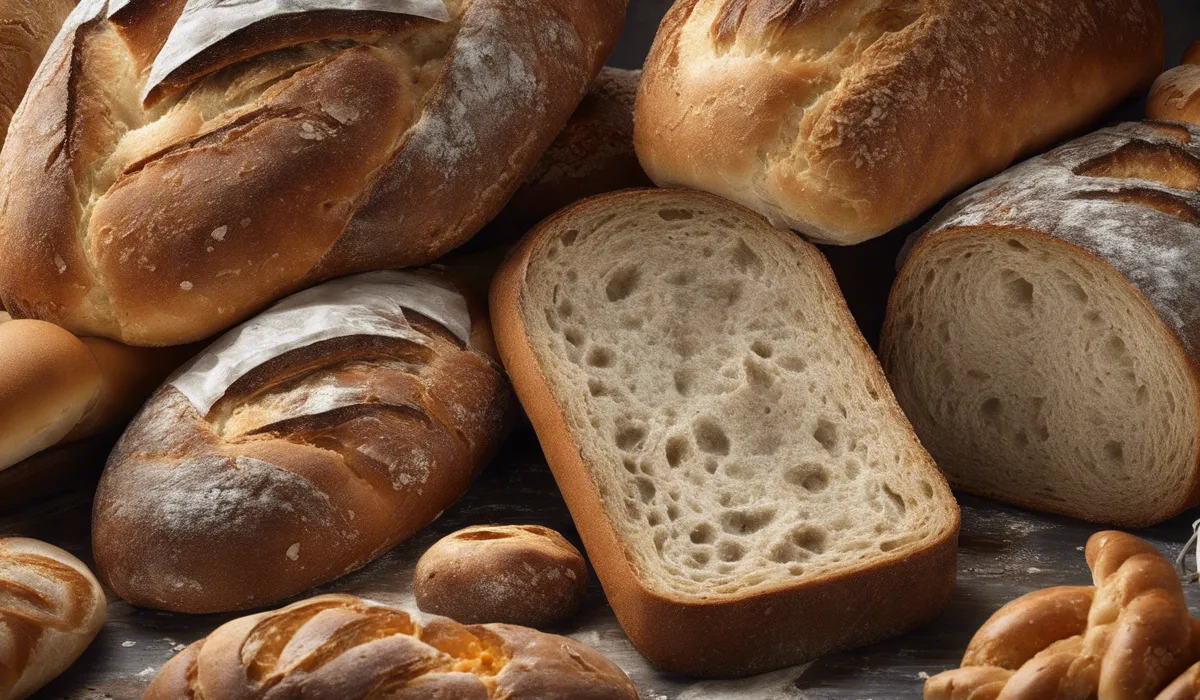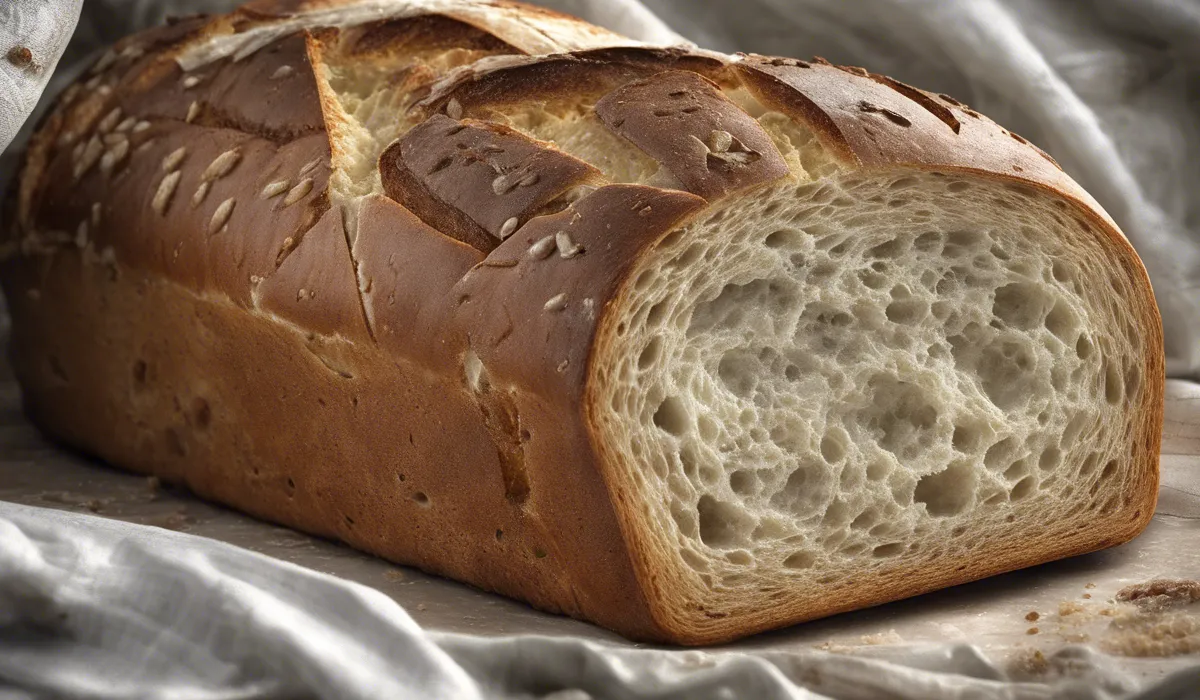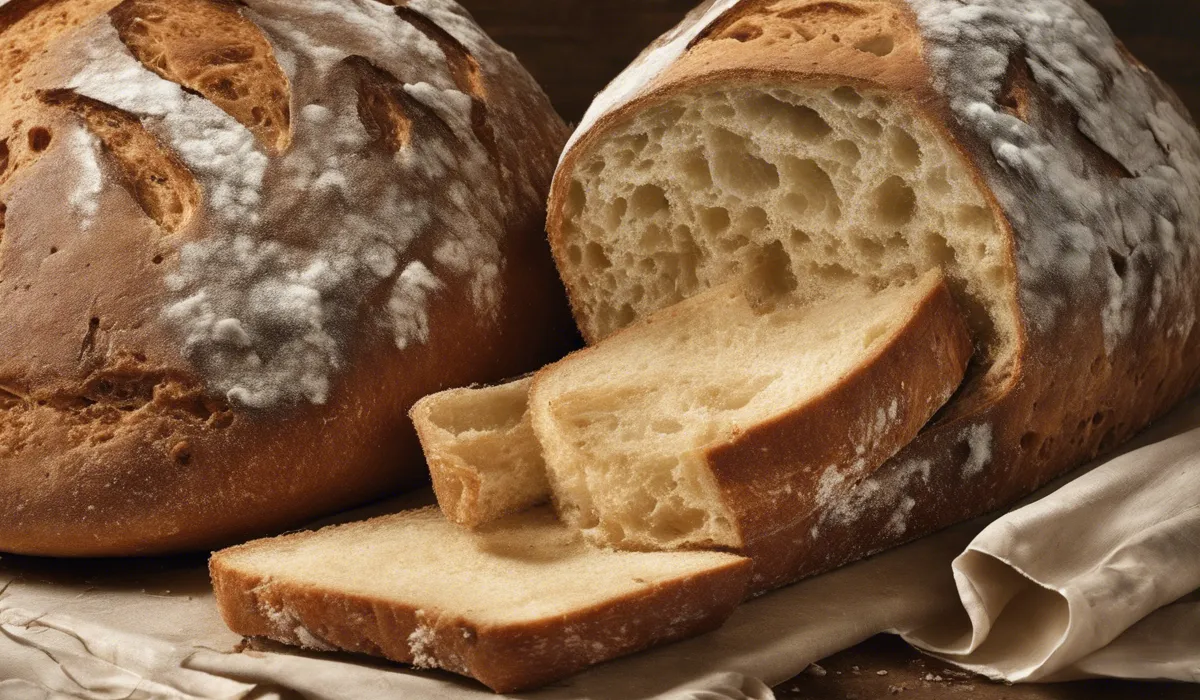Yes, consuming bread mold can potentially make you sick. Mold on bread may produce mycotoxins, which are harmful if ingested. Reactions can range from allergic responses to food poisoning symptoms. It’s best to discard moldy bread to avoid health risks.
Understanding Bread Mold

What is Bread Mold?
Bread mold is a type of fungus that can grow on your bread when it is left in the right conditions.
Mold comes in various types, but the ones that most often grow on bread include Rhizopus stolonifer, which is commonly known as black bread mold, as well as Penicillium and Aspergillus varieties.
These molds can look like white, green, or black fuzzy spots on the surface of the bread.
Perfect Conditions for Mold
Mold loves warm, moist, and dark places. When bread is stored in a plastic bag in a warm kitchen, it can become the perfect home for mold to grow.
A lack of air circulation can make the problem even worse. If you live in a place with high humidity, you might notice that your bread gets moldy more quickly than in drier climates.
Spotting Moldy Bread
It’s not always easy to tell if bread is moldy just by looking at it. Mold can start off as tiny specks that are hard to see.
As it grows, it becomes easier to spot. Look for fuzzy or velvety spots in different colors like white, green, or black. Sometimes, the bread might also smell sour or off, which is another sign that it might be time to throw it away.
Health Risks Associated with Bread Mold

Understanding Mycotoxins
Mycotoxins are toxic substances that some molds can produce. They can cause a lot of health problems if we eat them.
Some mycotoxins are more dangerous than others, and they can lead to symptoms like nausea, vomiting, and diarrhea. In severe cases, they can even damage your liver or cause cancer.
Common Molds on Bread
The most common molds found on bread are Aspergillus and Penicillium. Aspergillus can produce a mycotoxin called aflatoxin, which is one of the most harmful mycotoxins and can cause serious illnesses.
Penicillium molds can produce penicillin, which is an antibiotic, but some people are allergic to it, and it can be harmful if consumed in large amounts.
Risks for Vulnerable Groups
People with allergies, asthma, or a weak immune system need to be very careful about mold. Eating moldy bread can cause allergic reactions or make asthma worse.
For those with a weak immune system, like people who are sick or getting cancer treatments, eating mold can lead to serious infections.
Safe Practices to Prevent Mold-Related Illnesses

Storing Bread Properly
To keep your bread from getting moldy, store it in a dry, cool place. If you can’t eat it quickly, consider keeping it in the refrigerator or even the freezer.
Bread can last a long time in the freezer, and you can just take out what you need and warm it up.
Handling Moldy Bread
If you find mold on your bread, it’s best to throw it away. Don’t sniff it, as this can cause you to breathe in mold spores.
When you throw it away, put it in a sealed bag so the spores can’t spread to other foods or areas of your kitchen.
How to Avoid Eating Moldy Bread
Always check your bread before you eat it. Look for any signs of mold, and if you’re not sure, it’s better to be safe and throw it away.
If part of the bread is moldy, the spores can easily have spread to other parts that look fine, so it’s best not to eat any of it.
By understanding what bread mold is, the conditions that encourage its growth, and its visible characteristics, you can be more vigilant and prevent its consumption.
Knowing the health risks associated with bread mold, particularly for vulnerable groups, underscores the importance of these preventative measures.
Finally, by following safe practices to prevent mold-related illnesses, such as proper storage and handling of bread, you can maintain a healthy diet free from the risks of mold exposure.
FAQs About Bread Mold Sickness
Can you get sick from eating bread with mold on it?
Yes, eating moldy bread can make you sick as it may contain harmful mycotoxins.
What are the symptoms of getting sick from bread mold?
Symptoms can include allergic reactions and food poisoning symptoms such as nausea, vomiting, and diarrhea.
Is it safe to eat parts of the bread not affected by mold?
No, it’s not safe because mold can spread invisible spores throughout the bread, so it’s best to discard the entire loaf.
Can toasting bread kill the mold and make it safe to eat?
Toasting bread will not destroy mycotoxins already produced by the mold, so it does not make moldy bread safe to eat.
What should I do if I accidentally ate moldy bread?
If you accidentally eat moldy bread, monitor your health for any symptoms of illness and consider consulting a healthcare provider if symptoms arise.
Final Thoughts
Eating bread mold can be harmful due to the potential presence of mycotoxins. These toxins can lead to a range of adverse health effects, from allergic reactions to symptoms akin to food poisoning. To safeguard health, it is advisable to dispose of any bread that shows signs of mold.
